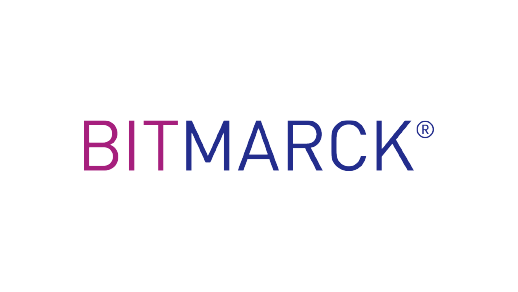Software Asset Management—What is SAM?

What is Software Asset Management and how to get started
Many officials working for big enterprises catch themselves wondering: What is SAM? Software Asset Management (SAM) is a business strategy for reclaiming budget and maximizing savings by actively controlling and automating procurement, usage and deployment of software licenses. Wherever you are in the process of implementing SAM in your business, this web page provides information to help you go further, quickly and easily. It will help you develop a vision for SAM at your company, partner with your stakeholders, and untangle the SAM knot for you. Software is more than just installations—it is the lifeblood of every company. With an efficient Software Asset Management tool, businesses are empowered to make more mileage out of their licenses, to lower licensing costs and to reduce software audit risks.
Key values of Software Asset Management
Compliance
Control license risks prepare for audit defense
Your value: 50% less audit response time
Compliance is the basis of Software Asset Management. Software vendors don’t want you to use more software than you licensed. Your job is to make sure your company is compliant with the terms and conditions of the license agreement, and well-prepared for any audit situation. Non-compliance can result in unexpected fees, which, if you’re not careful, can cost you big. Compliance is the first goal for most companies when starting SAM.
Transparency
Get 360-degree view of your IT estate
Your value: 100% transparency
Software Asset Management allows you to better understand your current IT estate, providing you the big picture into the organization’s software and hardware deployments, consumption, costs and licenses. As a result, your organization will be better equipped to plan for future IT portfolio requirements. As a result, you will receive an optimized return on investment and reduce costs.
Cost savings
Use SAM insights to lower licensing costs
Your value: 30% reduction of software costs
A SAM program helps you to understand your organization’s software and cloud requirements and determine your exact user needs, and thus allows you to eliminate costs associated with over-licensing or over-subscribing. Spend can also be reduced by identifying software licenses that can be re-harvested or reused. As a result, your organization does not need to invest in any new software licenses but can reclaim and reallocate software licenses to appropriate users.
Gartner® Peer Insight
“USU License Management (previously known as Aspera) is an excellent cost saving tool which helps in tracking all the software licenses and evaluating what licenses would be required by the users. The tracker helps the legal and finance team to track down the expiry of license of various application and remind them about renewing those licenses. This way, it maintains missing the renewal timelines and thus avoiding any interruption of services. It helps in overall tracking of contracts and licenses of different applications and thus helps the organization to run all the services smoothly.”
Healthcare company, 3B USD revenue
SAM is software vendor relationship management

Managing your licenses is the bedrock of good software vendor relationships. For many vendors, you will continue to license these software products for years to come, and your hope is that their products will innovate and provide your business more value.
But that can only happen if you’re in continuous and open dialogue with your vendors. Your feedback gives the vendors a concrete idea of what you need and how they can change both their software and their licensing schemes to meet your business needs.
If you know the terms of your license agreements and how you are using the software, then you’re in a better position to provide useful feedback to your vendors, making it even easier for them to respond to your business and organizational needs.
Learn how your SAM program can make your life easier with big vendor contracts:
Be audit-ready with a Software Asset Management solution

Audits can come at any time and without warning. It can leave your organization open to significant financial losses and undermine investor confidence in the health of the business. You want to know in advance whether you’re compliant, and if you’re not, what measures you can take to become compliant before it’s too late.
Relying on spreadsheets is building with straw. A SAM solution can protect you from unexpected audits and minimize your exposure. With just the click of a button, you can have a complete overview of your compliance position. Know whether you’re under-licensed and check your inventory to see whether you have spare licenses to help ease the pain.
With a SAM solution, you’re always ready for an audit.
Control cloud software usage to protect your money

Purchasing and using software is easier than it’s ever been. There’s no need to involve IT, when you can sign up for a SaaS subscription and start using the software through a browser immediately. However, as SaaS becomes more practical and available, managing the various subscriptions and other licenses becomes a complex task. Lack of transparency can lead to redundant SaaS resources and unnoticed expenses.
Use a SAM solution to control your cloud software spend. It gives you transparency for what (cloud) software products, versions and editions are used within the organization and on which devices and the device relationships. You can also find and remove unused or obsolete licenses, or correctly size license types.
See how to build an effective cloud Software Asset Management practice.
Why spreadsheets are not enough
Ok, spreadsheets are cheap and easy to use—making them attractive for smaller businesses with fewer assets to manage. But they are error-prone and can be easily duplicated without knowledge—all of which are costly in both time and money. Software Asset Management tools act as one centralized system for your IT asset data, which not only makes sure data isn’t over-written, but it also provides a detailed history of the changes made. Find a few reasons why Excel sheets are a thing of the past.
1. Licenses are easy to overlook
If your licenses were uncomfortable to sit on all day, you might pay more attention to them. But they’re intangible, and their terms and conditions only have an immediate effect on your business during contract renewals and audits. So, they’re easy to forget about.
2. No one reads software licenses (but someone should)
Licenses are long, complex and boring. Reading them is time consuming and might require dual degrees in computer science and the law. Not something most of us have in our back pockets.
The consequence is that most of us don’t know what we’ve licensed. It means that we’re unaware of the limits of our licenses, but more importantly, we have no idea what we’re entitled to do. A spreadsheet doesn’t know what’s in your licenses either. But the product catalog in a SAM tool does.
3. License metrics are complex
Each vendor has its own set of metrics for determining how to measure usage.
Here are just a few of the licensing metrics: per core, per device, per named device, per user, per named user, per processor (CPU count), per processor value unit
In a complex environment with software products from a range of different vendors, it can be easy to lose track of how usage for each product is determined. This level of complexity cannot be efficiently managed with a spreadsheet.
4. Data Center architectures changes affect your compliance
Depending on the number of devices running the software, how it’s configured, virtualization and the number of people or applications accessing it, a company’s licensing situation can be overly complex.
The situation is compounded by the fact that a company doesn’t run just one piece of software. A single company might use thousands of different software products, making it nearly impossible to get an overview with spreadsheets of who is using what, how often and when.
5. Cloud-based software is not centralized
Because cloud-based software isn’t installed on a physical machine in your network, it can be difficult to know which business unit is responsible for the costs. In a large organization, sharing cloud software licensing can help to keep down costs, but without a clear overview of who is using it, when and how often, business units may end up taking on an unfair portion of the costs, forcing them to allocate budget for resources they don’t use.
6. Data quality matters! Here’s why
To trust your compliance position, you need to trust the data it’s built on. Knowing what kinds of licenses to buy, how many and with what usage rights requires good data. Without clean, high-quality data, you might end up with agreements that neither meet your business needs nor are the right fit for your environment.
7. SAM involves multiple stakeholders
SAM touches a lot of departments from procurement to human resources and various IT disciplines. All these departments need to get behind a single SAM initiative. That means a SAM project manager must have a talent for herding cats. And for talking to different types of people with different needs and goals. That takes time and dedication to the cause. One thing is for sure, Software Asset Management is a team effort!
Use case: SAM savings in numbers
Business Unit 1 needs access to a word processing program for 25 of its employees, but before purchasing new licenses for Word, they check in with central IT. Central IT uses a SAM solution to see that Business Unit 2 has 45 licenses for Word, but they are only using 32.
Following an automated process, central IT allocates those 13 unused licenses to BU1, and then purchases the other 12 that they need. By using Software Asset Management, central IT has saved the cost of 13 additional licenses and the related maintenance costs. Now, consider the savings for a company with thousands of employees and software products.
Case Study: Over $10.2 million in benefits from cloud management
TEI™ of USU Software Asset Management Solution
Before implementing a new technology, you want to know if the investment is worth it. That’s why USU commissioned Forrester Consulting to evaluate the ROI of USU SaaS Optimization solutions. The customer they studied experienced a risk-adjusted ROI of 383% with payback in less than 6 months.
How to launch a SAM program?
1. Document and standardize your procurement processes
- Know who and how each business unit buys software licenses.
- Define standardized processes and rules for license procurement.
- Establish standardized processes for storing licenses and license certificates.
2. Clean up and organize your license inventory
- Create a central license inventory (if you don’t already have one).
- Move all licensing agreements and software maintenance contracts to the inventory.
- Establish an organizational system (responsible people and processes) that allows you to locate licensing documents and information easily.
- Learn what your license metrics are to measure the licenses you need.
- Appoint a license manager to administer/maintain your inventory.
3. Catalog your software
- Use discovery and inventory tools to find out what software is installed in your environment.
- Normalize software titles to make sure you can match a license to them.
4. Inventory all your systems (Don’t forget open-source systems!)
When cataloging your software, it can be easy to miss things installed on systems not currently running or not currently hooked up to the network.
- Install discovery tools on all systems, so you don’t miss anything.
- Inventory open-source systems (like Linux) because while the OS might not need a paid license, it might still be running software that does.
5. Determine software usage
Find out when a software title is being used and how it’s installed (or not e.g. cloud), configured and accessed.
6. Measure how many licenses you need per software usage
Once you’ve cataloged your entire system and recorded usage data:
- Go back to your license inventory and make sure that your licenses cover all the ways in which the software is installed and used.
- Apply product use rights to get the full value of your licenses and save costs.
7. Keep updating your license and software inventories
- Look for licensing models that best fit your software usage habits and IT environment.
- And keep tracking usage to maintain compliance.
While continuously updating:
- Software titles—as users download new software, upgrade programs or enter the cloud.
- The software usage and IT environment data.
- The license inventory to track contract milestones and capture new purchases and changes to licenses like upgrades or downgrades.
8. Manage your licenses more efficiently
The results of your SAM process and data transparency will allow you to use your licenses more efficiently:
- See where you’re over- and under-licensed. Then reallocate your available licenses to cover your needs, saving you money on new licenses and reducing audit risk.
- Don’t forget maintenance! If you’re not using a license, then don’t forget to cancel the maintenance contract.
- When contract renewals come up, use your SAM insights to negotiate better agreements for your company.
Summary
A SAM program can ultimately lead to significant cost savings by improving software license compliance, reducing the risk of software audits and penalties, optimizing software usage and though spend reduction by +30% for software licenses and cloud subscriptions and streamlining software management processes. Therefore, it pays off for organizations to assess the potential benefits of a SAM solution and weigh them against the cost.
"Our software inventory covers over 1,500 items from more than 100 software publishers. We’ve been able to increase the productivity of the employees in software purchasing by 10%."
Thomas Stange
Head of License Management Department
BITMarck (Healthcare Service Provider)

Get in touch with an expert
Do you have questions about our offering? A quick call can be way more helpful than a long email chain. Talk to one of our experts to explore our products and see them in action.
Book a meeting
Brian Riley
Sales Development
IT Asset Management
Send us a message
No matter if you like to partner with USU or just have a few questions.
Frequently Asked Questions
1. What is the ROI of Software Asset Management?
The Return of Investment of a SAM solution can be significant for organizations that invest in it. By carefully assessing their software environment and needs, and selecting the right SAM tool or tools, organizations can improve software management processes and reduce costs in the long run.
Typical ROI examples are:
- Improved license compliance: A SAM solution can help organizations ensure that they are properly licensed for the software they use, which can reduce the risk of software audits and penalties.
- Streamlined audit preparation: A SAM solution can help to reduce the audit response time by +50%.
- Software usage optimization: A SAM solution can help organizations identify underutilized software and reduce the amount of unnecessary software licenses, leading to cost savings by +30% for software licenses and cloud subscriptions.
- Streamlined software management: A SAM solution can help organizations streamline software management processes, reducing the time and resources required for software administration.
- Better negotiation with software vendors: A SAM solution can provide organizations with more accurate data on their software usage, which can help them negotiate better pricing and licensing terms with software vendors.
- Reduced security risk: A SAM solution can help organizations ensure that they are using up-to-date software versions and patches, reducing the risk of security breaches and data loss.
2. Is the implementation of a SAM solution time-consuming?
The implementation time depends on several factors, including:
1. Size and complexity of the organization: The larger and more complex the organization's software environment, the more time it will take to implement a SAM solution.2. Existing SAM processes: If the organization has some SAM processes already in place, such as a basic inventory of software assets, it may take less time to implement a more comprehensive SAM solution.
3. SAM tools: The selection, installation, and configuration of SAM tools can also affect the time required for implementation.
4. Staff training: The time required for staff training can also impact the overall implementation time.
5. Data accuracy and completeness: The accuracy and completeness of the organization's data related to software assets, licensing agreements, and usage patterns can affect the time required for implementation.
It's important to note that while the initial implementation of a SAM solution may require time and resources, ongoing SAM processes can help streamline software management and reduce costs in the long run. Once the SAM solution is in place, ongoing monitoring and maintenance can be done more efficiently, saving time and resources over time.
3. How much does a SAM solution cost?
The cost of a Software Asset Management solution can vary depending on several factors, including the size of the organization, the complexity of its software environment, the level of detail required for the SAM solution, and the specific SAM tool or tools selected. However, investing in a SAM solution can ultimately lead to cost savings and improved efficiency in managing software assets.
Here are some factors that can affect the cost of a SAM solution:
1. Size and complexity of the organization: The larger and more complex the organization's software environment, the more costly the SAM solution may be.2. Level of detail required: The more detailed the SAM solution, such as tracking usage and license compliance across multiple departments, the more expensive it may be.
3. SAM tools: The cost of SAM tools can vary widely depending on the functionality and features provided.
4. Implementation and customization: The cost of implementation and customization of a SAM solution can also impact the overall cost.
5. Staff training: The cost of staff training can also add to the overall cost of a SAM solution.
4. Who are typical SAM stakeholders within an organization?
SAM is a cross-functional initiative that requires the involvement of various stakeholders within an organization.
1. IT Department: Responsible for managing the organization's software environment and is typically heavily involved in SAM initiatives. The IT department is typically responsible for implementing and maintaining the SAM solution, as well as ensuring that software is properly installed and used.2. Procurement Department: Responsible for purchasing software licenses and managing vendor relationships. They play an important role in SAM by ensuring that the organization is properly licensed and compliant with software vendor agreements.
3. Finance Department: Responsible for managing the organization's financial resources and ensuring that the organization is cost-efficient. They play an important role in SAM by tracking software expenditures and identifying cost savings opportunities.
4. Legal Department: Responsible for managing the organization's legal and regulatory compliance. Their role is to ensure that the organization is compliant with software vendor agreements and licensing requirements.
5. Business Units: These groups are very important stakeholders as they are responsible for ensuring that software is used efficiently and effectively, and for providing feedback on the SAM solution.
6. Senior Management: Responsible for setting the organization's strategic direction and ensuring that SAM initiatives align with the organization's goals. They normally are providing support and resources for SAM initiatives and communicating the importance of SAM to the organization.
